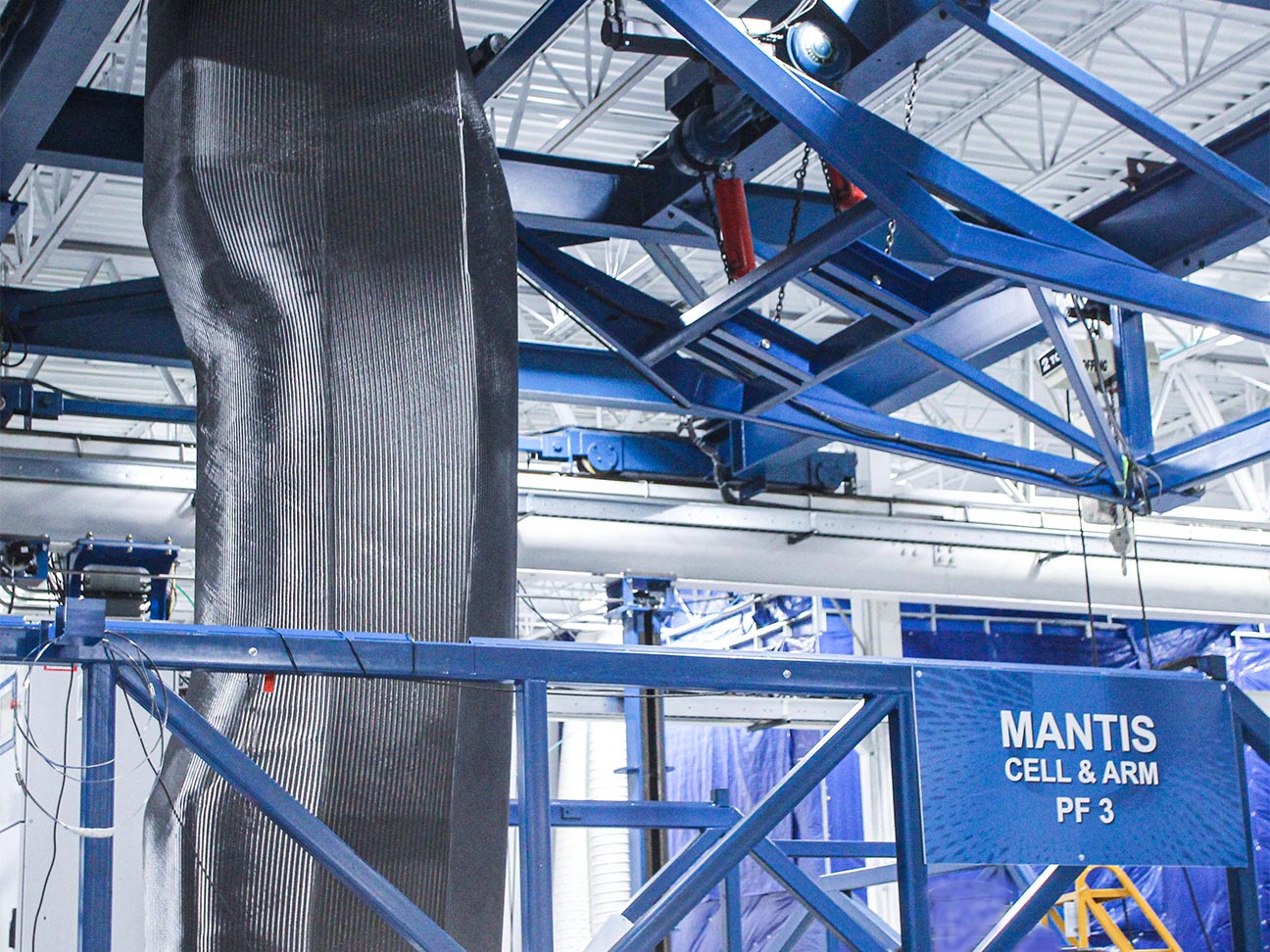Aerospace Systems Directorate collaborates with partners to build innovative airframe
WRIGHT-PATTERSON AIR FORCE BASE, Ohio (AFRL) – Under the Design for Manufacture of Attritable Aircraft Primary Structure (DMAAPS) program, an Air Force Research Laboratory Aerospace Systems Directorate team of researchers and engineers tested a low cost attritable aircraft fuselage and wings design, September 14, at Wright-Patterson Air Force Base, Ohio.
A&P Technology, Hawthorn Composites, the University of Dayton Research Institute (UDRI) and Kratos created a manufacturing solution for attritable aircraft primary structure. The team’s innovative manufacturing approach replaced more costly composite practices and was identified by the Air Force as an effective manufacturing technique of aircraft fuselage and wing airframe structures, in order to achieve the lowest possible cost and faster, more agile production for airframe systems.
“DMAAPS was conceived to evaluate the ability of an affordable design-for-manufacture approach to meet the form, fit, and function of a high subsonic unmanned military aircraft,” said Ray Fisher, the DMAAPS program manager with the Aerospace Systems Directorate. “Under DMAAPS, AFRL established a collaborative environment where an aircraft manufacturer worked with innovative Materials and Manufacturing Processes (M&P) owners to demonstrate and test an affordable and agile M&P approach.”
This test aimed to compare the structural strength and stiffness of the fuselage and wings built using novel manufacturing processes versus a traditional aerospace M&P approach as applied to the same air vehicle design. Researchers and engineers designed and planned weeks in advance to gain more insight on attritable aircraft capabilities.
“Each test has unique requirements and it can take many months for test systems design, manufacture of custom hardware to implement test parameters, configuration of the test article with instrumentation and test hardware, and overall systems integration,” said Matthew Durham, a project engineer with the Aerospace Systems Directorate. “This DMAAPS preparation took only six weeks, since it was designed to leverage an existing test system, so our efforts were article configuration and test systems integration.”
Attritable refers to a new class of unmanned aircraft that are purpose-designed and routinely reusable, but built affordably to allow a combatant commander to tolerate putting them at risk. Improving attritable aircraft technology is crucial to providing the operational warfighter with a tool that is affordable and easily manufactured in tight time constraints.
“Autonomous Collaborative Platforms (ACPs) will play an increasingly important role in various air force missions,” said Doug Meador, the ACP air vehicles portfolio manager with the Aerospace Systems Directorate. “The main tenets of ACPs are autonomy, affordability, speed of design and build, and mission effectiveness. DMAAPS directly addresses affordability and speed of design and build, which are critical to our ability to develop these systems in large numbers and present a military challenge to peer adversaries.”
The insights gained from this test allow AFRL to continuously improve technological advances and foster collaborative relationships with industry and academia partners.

Under the Design for Manufacture of Attritable Aircraft Primary Structure (DMAAPS) program, an Aerospace Systems Directorate team of researchers and engineers tested a low cost attritable aircraft fuselage and wings design, September 14, at Wright-Patterson Air Force Base, Ohio. (Courtesy Photo)

Under the Design for Manufacture of Attritable Aircraft Primary Structure (DMAAPS) program, an Aerospace Systems Directorate team of researchers and engineers tested a low cost attritable aircraft fuselage and wings design, September 14, at Wright-Patterson Air Force Base, Ohio. A&P Technology, Hawthorn Composites, the University of Dayton Research Institute (UDRI) and Kratos created a manufacturing solution for attritable aircraft primary structure. (Courtesy photo)
